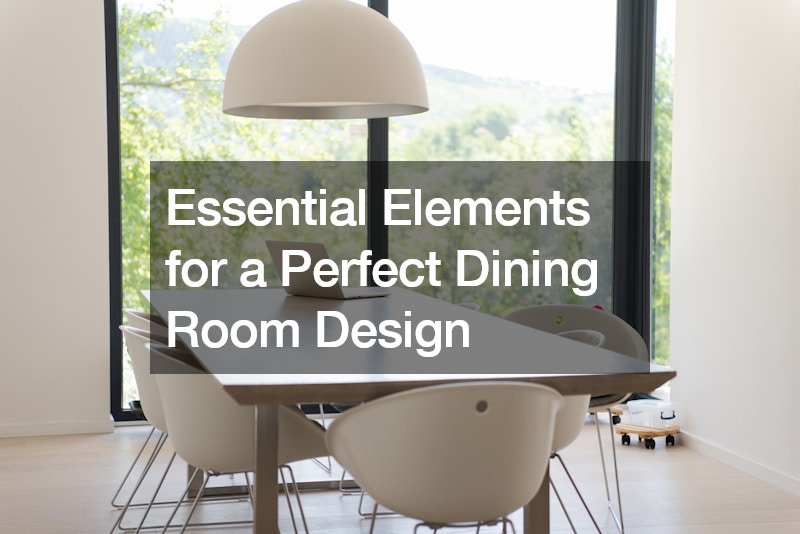The dining room is the heart of a home, a space for shared meals, laughter, and connection. Whether hosting family dinners or lively gatherings with friends, creating a well-designed dining room fosters a sense of welcome and sets the stage for memorable moments. But where do you begin? This guide explores the essential elements needed to craft a dining room that’s both stylish and functional.
The Foundation: Choosing the Perfect Table and Chairs
The centerpiece of any dining room is undoubtedly the table. It should be the ideal size for your space, allowing for comfortable movement and accommodating the number of people you typically host.
For smaller rooms, round or square tables offer a more intimate feel, while rectangular or oval tables better suit elongated spaces. Proportion is key. A massive table will overpower a petite room, while a dainty table will feel insignificant in a large space.
Consider the material as well. Wood offers timeless elegance and comes in various finishes to suit your taste. Glass tables bring a touch of lightness and modernity to a space, but be mindful of fingerprints and scratches. Stone offers a luxurious feel but requires careful maintenance. Ultimately, the choice depends on your aesthetic preferences, lifestyle, and budget.
Chairs are equally important, providing comfort and completing the dining set. The number of chairs should correspond to the table size, allowing for at least 24-30 inches of space per person. Upholstered chairs offer plush comfort, while wooden chairs provide a classic look. Chairs with arms add a touch of luxury and are ideal for extended gatherings. Remember, comfort is paramount. Choose chairs with supportive backs and a seat height that allows your feet to rest comfortably on the floor.
Lighting: Setting the Mood
Proper lighting is crucial in creating a welcoming and functional dining space. Overhead lighting is essential, providing general illumination. Chandeliers offer a touch of grandeur, while pendant lights add a more contemporary feel. Consider the height of your ceilings; a statement chandelier might overwhelm a room with low ceilings. Track lighting offers versatility, allowing you to direct light where it’s needed most.
Don’t underestimate the power of natural light. If you have the opportunity, incorporate large windows or frameless flat glass rooflights to bathe the room in natural light. This creates a bright and airy atmosphere, making the space feel more inviting. During evenings, layer your lighting by adding wall sconces, table lamps, or floor lamps for a warm and inviting ambiance.
A Focal Point: Statement Art or Mirror
Elevate your dining room by incorporating a statement piece that draws the eye and adds personality. A large piece of artwork reflecting your taste or a generously sized mirror can serve as a focal point. Mirrors, according to the principles of feng shui, are believed to promote abundance by reflecting the table setting. The size of the artwork or mirror should be proportional to the dining table. In a smaller room, a vertically oriented artwork will create a sense of height, while a horizontal piece will visually expand the space.
Accessorize with Style: The Finishing Touches
Once you have the foundational elements in place, it’s time to personalize your dining room with tasteful accessories. A simple centerpiece adds a touch of elegance without cluttering the table. A beautiful vase with fresh flowers, a bowl filled with decorative accents, or a cluster of candles are all excellent options.
Area rugs can define the dining space and add warmth and texture. Choose a rug large enough to accommodate the entire dining set, with at least 36-42 inches of clearance around the table to allow for comfortable chair movement. Opt for a low-pile rug that’s easy to clean, as spills are inevitable in a dining space.
Window treatments add both style and functionality. Roman shades or blinds offer a clean and modern look, while floor-to-ceiling curtains add a touch of drama. Consider the level of privacy and light control you desire when choosing window treatments. Frameless flat glass rooflights can also be incorporated with blinds or shades to regulate the amount of natural light streaming in.
The Extras: What You Don’t Necessarily Need
While the elements mentioned above are essential for a well-designed dining room, there are some items that don’t require a permanent place on the table. Formal tablecloths, elaborate place settings, and an abundance of glassware and utensils are best reserved for special occasions. Keeping the table clean and uncluttered creates a sense of calm and allows the beauty of the table itself to shine through.
Conclusion: Creating a Functional and Stylish Dining Room
Designing a dining room is a fun and personal journey. By focusing on the essential elements – a well-proportioned table and comfortable chairs, layered lighting, a statement piece, and tasteful accessories – you can create a space that’s both stylish and functional. Remember, it’s the little details that make a difference.
.


